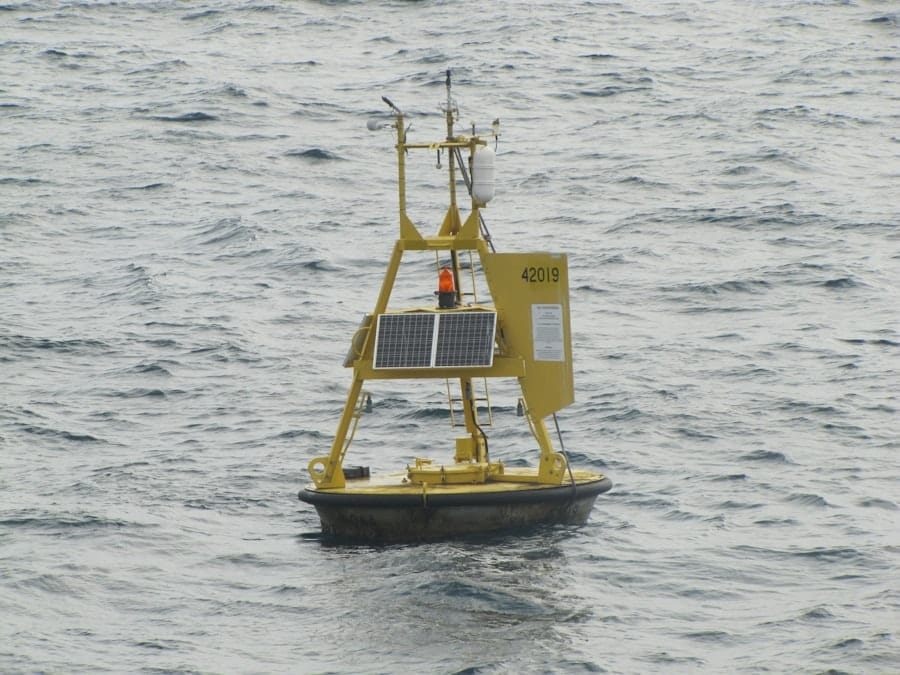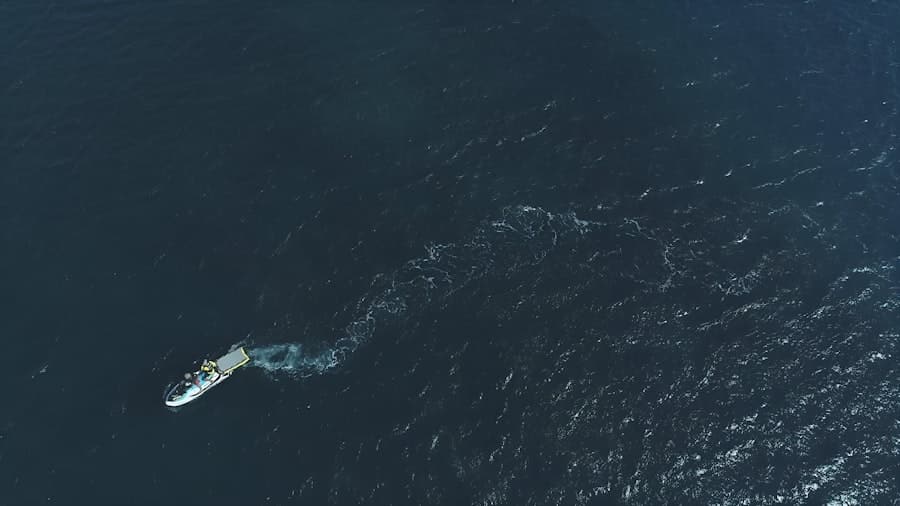Ocean energy technologies harness the immense power of the world’s oceans, utilizing various methods to convert kinetic and thermal energy from water into usable electricity. As the global demand for renewable energy sources continues to rise, ocean energy presents a promising avenue for sustainable power generation. The oceans cover over 70% of the Earth’s surface and contain vast amounts of energy in the form of waves, tides, and thermal gradients.
This untapped resource has the potential to significantly contribute to the global energy mix, reducing reliance on fossil fuels and mitigating climate change. The development of ocean energy technologies is not a new concept; it has been explored for decades. However, recent advancements in engineering, materials science, and environmental monitoring have accelerated progress in this field.
As nations strive to meet ambitious carbon reduction targets, ocean energy technologies are gaining traction as viable alternatives to traditional energy sources. The integration of these technologies into national energy strategies could play a crucial role in achieving energy security while promoting environmental sustainability.
Key Takeaways
- Ocean energy technologies harness the power of the ocean’s waves, tides, and currents to generate electricity.
- Types of ocean energy technologies include wave energy converters, tidal turbines, and ocean thermal energy conversion systems.
- Advantages of ocean energy technologies include renewable and predictable energy source, while challenges include high initial costs and potential environmental impacts.
- Current applications of ocean energy technologies are primarily in the form of pilot projects and small-scale commercial operations.
- Innovations and developments in ocean energy technologies focus on improving efficiency, reducing costs, and increasing reliability of the systems.
Types of Ocean Energy Technologies
Ocean energy can be broadly categorized into several types, each utilizing different mechanisms to capture energy from the sea. Tidal energy is one of the most established forms, relying on the gravitational pull of the moon and sun to create tidal movements. Tidal turbines, similar to underwater wind turbines, are installed in areas with strong tidal currents, converting the kinetic energy of moving water into electricity.
Notable projects include the MeyGen tidal array in Scotland, which aims to generate up to 398 megawatts (MW) of power from the Pentland Firth. Wave energy is another significant category, harnessing the energy produced by surface waves. Various technologies exist within this domain, including point absorbers, oscillating water columns, and attenuators.
Point absorbers float on the surface and move with the waves, converting mechanical motion into electrical energy. The Pelamis Wave Energy Converter, for instance, was an innovative design that utilized a series of connected cylindrical sections to capture wave energy off the coast of Portugal. Although it faced operational challenges and was ultimately decommissioned, it paved the way for further innovations in wave energy technology.
Ocean thermal energy conversion (OTEC) exploits the temperature difference between warmer surface water and colder deep water to generate electricity. This method is particularly promising in tropical regions where such temperature gradients are significant. OTEC systems can operate in closed-cycle or open-cycle modes, with closed-cycle systems using a working fluid that vaporizes at low temperatures to drive turbines.
The Natural Energy Laboratory of Hawaii Authority has been a pioneer in OTEC research, demonstrating its potential for sustainable energy production.
Advantages and Challenges of Ocean Energy Technologies

The advantages of ocean energy technologies are manifold. Firstly, they offer a renewable source of energy that is abundant and largely predictable compared to other renewable sources like solar and wind. Tidal patterns are highly reliable due to their astronomical origins, providing a consistent energy output that can be integrated into power grids with greater certainty.
Additionally, ocean energy systems have a relatively small land footprint compared to terrestrial renewable installations, minimizing their impact on terrestrial ecosystems. However, despite these advantages, ocean energy technologies face significant challenges that hinder their widespread adoption. One major obstacle is the high initial capital cost associated with developing and deploying these systems.
The harsh marine environment poses engineering challenges that require robust materials and designs capable of withstanding corrosion and extreme weather conditions. Furthermore, the installation and maintenance of ocean energy devices can be logistically complex and expensive, particularly in remote offshore locations. Environmental concerns also present challenges for ocean energy technologies.
While they are generally considered cleaner than fossil fuels, their installation can disrupt marine ecosystems and habitats. For instance, tidal turbines may affect local fish populations and migratory patterns if not carefully sited and monitored. Balancing the need for renewable energy with environmental stewardship is crucial for the long-term viability of ocean energy projects.
Current Applications of Ocean Energy Technologies
Currently, several ocean energy technologies are being deployed around the world, showcasing their potential for practical applications. In Europe, countries like the United Kingdom and France have made significant investments in tidal energy projects. The La Rance Tidal Power Station in France has been operational since 1966 and remains one of the largest tidal power plants globally, generating approximately 240 MW of electricity annually.
Wave energy projects are also gaining traction in various regions. The WaveRoller project in Portugal utilizes submerged panels that move with wave action to generate electricity. This technology has been successfully tested and deployed in pilot projects, demonstrating its feasibility for commercial use.
Similarly, Australia has been exploring wave energy through initiatives like the Carnegie Clean Energy’s CETO system, which converts wave motion into hydraulic pressure to drive turbines. In addition to these established projects, OTEC systems are being tested in various locations. The OTEC pilot plant in Hawaii has demonstrated the viability of this technology for providing baseload power generation while also producing freshwater through desalination processes.
These current applications highlight the diverse potential of ocean energy technologies to contribute to local and national energy needs while promoting sustainability.
Innovations and Developments in Ocean Energy Technologies
The field of ocean energy is witnessing rapid innovations aimed at improving efficiency and reducing costs. Researchers are exploring advanced materials that can withstand harsh marine environments while minimizing maintenance needs. For instance, developments in composite materials and coatings are enhancing the durability of tidal turbines and wave energy converters, making them more resilient against corrosion and biofouling.
Moreover, advancements in digital technology are playing a crucial role in optimizing ocean energy systems. The integration of artificial intelligence (AI) and machine learning algorithms allows for real-time monitoring and predictive maintenance of ocean energy devices.
Another area of innovation is hybrid systems that combine multiple forms of ocean energy generation. For example, some projects are exploring the integration of tidal and wave energy systems to create more reliable power outputs by leveraging complementary generation profiles. This approach not only enhances overall efficiency but also diversifies revenue streams for operators.
Environmental Impact of Ocean Energy Technologies

The environmental impact of ocean energy technologies is a critical consideration as they are developed and deployed. While these technologies offer cleaner alternatives to fossil fuels, their implementation can have localized effects on marine ecosystems. For instance, tidal turbines may alter water flow patterns and sediment transport, potentially affecting habitats for fish and other marine organisms.
To mitigate these impacts, comprehensive environmental assessments are essential before project approval. Monitoring programs can help track changes in marine life populations and ecosystem health during and after installation. Adaptive management strategies can be employed to adjust operations based on observed environmental impacts, ensuring that ecological integrity is maintained.
For example, artificial reefs created by submerged structures can enhance local biodiversity by providing habitats for marine species. By carefully designing ocean energy installations with ecological considerations in mind, it is possible to create synergies between renewable energy production and marine conservation efforts.
Economic Feasibility of Ocean Energy Technologies
The economic feasibility of ocean energy technologies is a complex issue influenced by various factors including capital costs, operational expenses, regulatory frameworks, and market dynamics. While initial investments can be substantial due to the technological challenges associated with marine environments, ongoing advancements are gradually reducing costs. Government incentives and supportive policies play a crucial role in fostering investment in ocean energy projects.
Feed-in tariffs or power purchase agreements can provide financial stability for developers by guaranteeing fixed prices for generated electricity over a specified period. Additionally, public-private partnerships can help share risks associated with large-scale deployments while leveraging private sector expertise. As technology matures and economies of scale are achieved through increased deployment, it is anticipated that costs will continue to decline.
The levelized cost of electricity (LCOE) from ocean energy sources is expected to become more competitive with traditional fossil fuels as innovations drive efficiency improvements and reduce maintenance requirements.
Future Outlook for Ocean Energy Technologies
The future outlook for ocean energy technologies appears promising as global interest in renewable energy continues to grow. With increasing recognition of climate change impacts and the urgent need for sustainable solutions, governments and private sectors are investing heavily in research and development within this field. Collaborative efforts among nations can accelerate knowledge sharing and technological advancements.
Emerging markets in developing countries also present opportunities for ocean energy deployment as they seek sustainable solutions to meet growing energy demands without exacerbating environmental degradation. Coastal nations with abundant marine resources can leverage their geographical advantages to develop localized ocean energy projects that contribute to both economic growth and environmental sustainability. As public awareness about climate change rises, consumer demand for clean energy sources will likely drive further investment into ocean energy technologies.
Innovations such as floating solar panels combined with offshore wind farms could create hybrid systems that maximize resource utilization while minimizing land use conflicts onshore. In conclusion, while challenges remain in terms of cost-effectiveness and environmental impact mitigation, the potential benefits of ocean energy technologies make them an essential component of future global energy strategies. As research progresses and deployment expands, these technologies could play a pivotal role in transitioning towards a more sustainable and resilient energy future.
In the quest to harness renewable energy sources, ocean energy technologies are gaining attention for their potential to provide sustainable power. As we explore the possibilities of these technologies, it’s essential to consider advancements in other tech fields that can support such innovations. For instance, the development of cutting-edge software plays a crucial role in designing and optimizing energy systems. An article on the best software for 3D printing highlights how advanced software solutions can enhance the precision and efficiency of creating components for ocean energy devices, thereby contributing to the overall effectiveness and sustainability of these technologies.
FAQs
What is ocean energy?
Ocean energy refers to the energy that can be harnessed from the ocean’s waves, tides, currents, and thermal gradients. It is a renewable and sustainable source of energy.
What are ocean energy technologies?
Ocean energy technologies are devices and systems designed to capture and convert the energy from the ocean into electricity or other forms of power. These technologies include wave energy converters, tidal turbines, and ocean thermal energy conversion systems.
What are the potential benefits of ocean energy technologies?
Ocean energy technologies have the potential to provide a clean and renewable source of energy, reduce greenhouse gas emissions, create jobs in the renewable energy sector, and enhance energy security by diversifying the energy mix.
What are the challenges of ocean energy technologies?
Challenges associated with ocean energy technologies include high upfront costs, technical and operational challenges in harsh marine environments, potential impacts on marine ecosystems, and the need for infrastructure to transmit the energy to shore.
What is the current status of ocean energy technologies?
Ocean energy technologies are still in the early stages of development and deployment. Several pilot projects and demonstration sites have been established around the world, but commercial-scale deployment is limited.
What is the potential for growth in ocean energy technologies?
The potential for growth in ocean energy technologies is significant, with studies suggesting that ocean energy could contribute a substantial portion of the world’s electricity needs in the future. However, further research, development, and investment are needed to realize this potential.

